In November 2017, 4 retirees from Shell, led by Kuching boy, Freddie Macfarlaine, embarked on a journey of 2 parts.
Part 1 was to spend 3 days and 2 nights in Bario.
Part 2 was a 450km road trip from the oil town of Miri to the scenic coastal city of Kota Kinabalu.
A bit about the Travellers…
All 4 worked for Shell with collective tenure of more than 120 years in this Oil & Gas major. Fred & Nick are currently based out of KL whilst Kah Meng & Harry live in the little red dot south of the Malaysian Peninsular.
All have since retired from their corporate roles but are still very active and engaged with what is happening in their ole company and communities.
Why Bario?
Bario is 180km East of Miri and is a valley in the mountains of North-East Sarawak with the borders of North Kalimantan just a short 30km away.
It is appx 1000m above sea-level and the only viable access is via air though one can take a 18 hour road journey with the tirmber trucks via the logging trail which forges across streams and mountains.
Due to its height, the average temperature is a pleasant 21C and its remoteness gives it a special aura.
The tribal community of the Bario highlands are the Kelabits and they number not more than 6,600 globally with 20% living in Bario alone. The Kelabits are the smallest ethnic community but they certainly punch above their weight as several have taken up key political and business leadership in Malaysia with at least 10% attaining tertiary education.
Most of their working adults and youth above 12 have moved to Miri, Kuching and KL for work and pursue higher education.
Though originally headhunters until the 1920s, the Kelabits have embraced Christianity in a big way and most are practicising Protestants.
The Kelabits in Bario live in longhouses where communal living is much cherished and those who have more often go out to help and give to those who have less.
Conflicts are discussed and deliberated by village elders and their guidance is taken seriously.
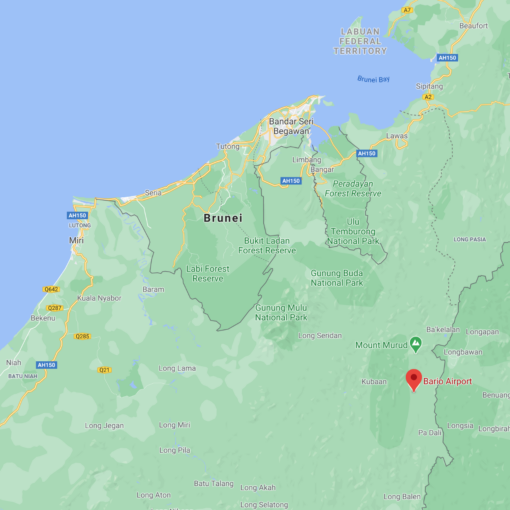
Bario is 180km east of Miri and just 30km from the borders of North Kalimantan, which is part of Indonesia.
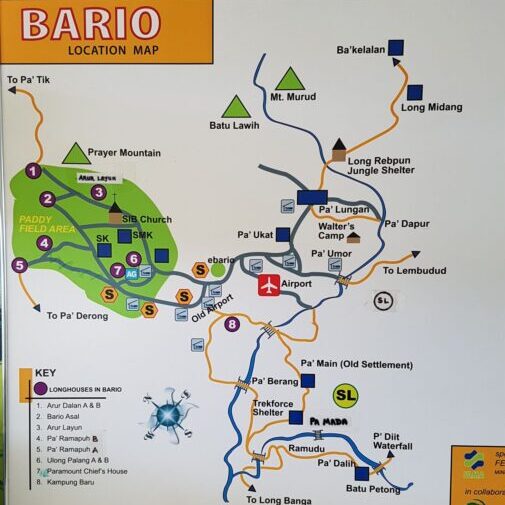
Bario is more than 1,000m above sea-level and the tallest mountain in Sarawak, i.e. Mt Murud which is appx 2,400m lies 20km north of Bario town.
What did we do in Bario?
The 4 of us flew in from Miri to Bario via a 64 seat propeller plane operated by MasWings (a subsidiary of Malaysian Airlines). The flight was certainly eventful as you are seated just behind the pilots and had a birds eye view of what the pilots do in the cockpit. Though only a short 40 mins flight, one had a chance to experience the vast landscape of the massive Borneo jungle.
We stayed at the Labang Longhouse which is appx 1 km north of the Bario Airport and 1 km south of the town center. This lovely homestay is owned by Lucy Labang who is a Kelabit and also a School Principal in Miri before she retired a few years ago.
She helped us know more about her people and even took us around town plus organizing a trip to visit a Longhouse which her people still lived.
We trek and saw how the nomadic Penans are adjusting to urban life, sampled much of their local dishes and went to the little factory which made the famous Bario salt.
The stars do come alive at night up in the mountains too.
Bario is famous for their rice and the pineapples too. Wild boars abound in the mountains and the rivers teem with fishes which are supplemented with local ponds. A local fern called Midin grows freely and is the vegetable of choice in Bario and also across Sarawak.
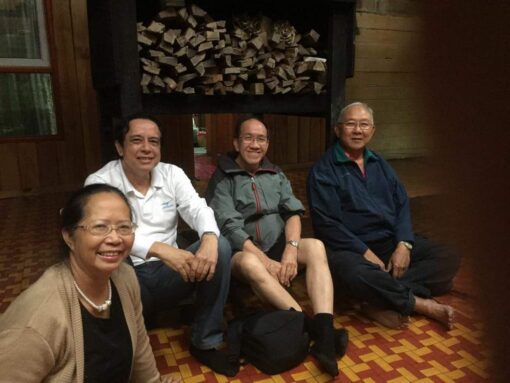
The hostest with the mostest, Lucy Labang, who is owner of Labang Longhouse with Fred, Kah Meng & Nick.

The very nice dining room of Labang Longhouse where we had all our meals where the ingredients came direct from the land.
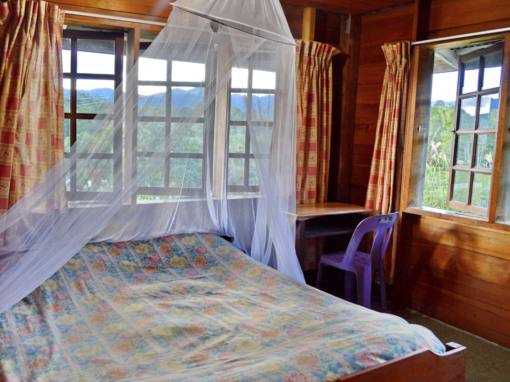
The bedrooms were comfortable and had big windows showing the vast landscapes and open skies.

Lucy’s son Ryan helps out when he is not flying as he is a commercial pilot. The pond is within the compound of Labang Longhouse and where river fishes are reared for food.
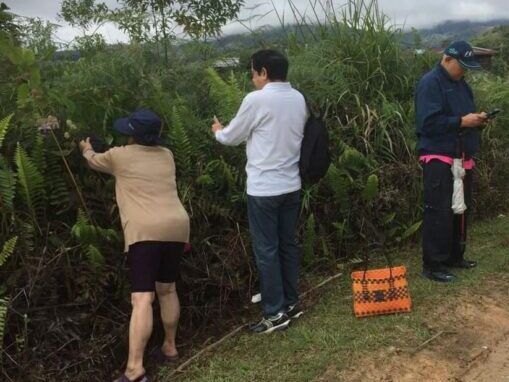
Everyone helps out to collect Midin, which is a fern, favored by the locals as it taste great and grows freely in the mountains.
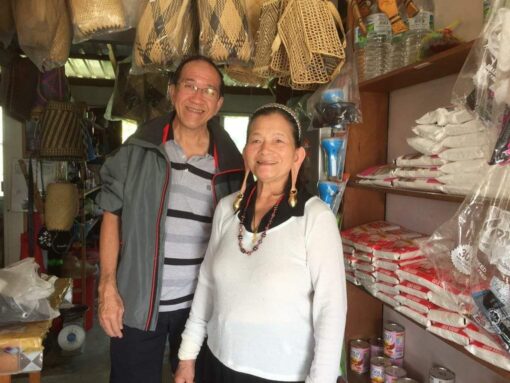
Kah Meng with the shop owner who is a Kelabit elder and whose long earlobes are much treasured for hanging beautiful ornaments.
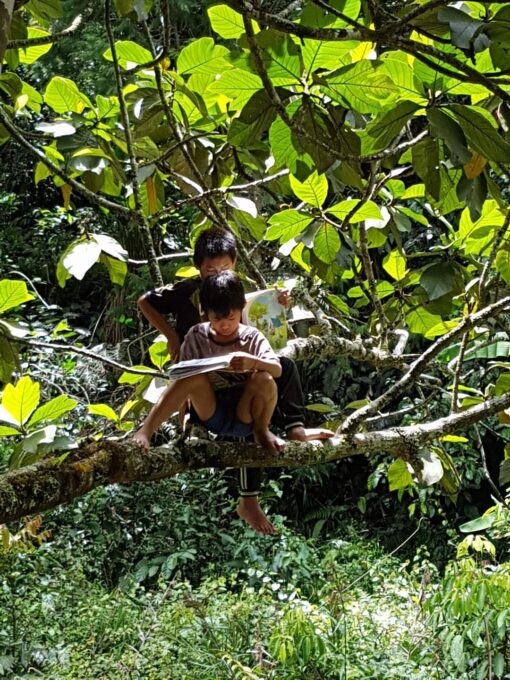
The Penans are a nomadic community and their children are now attending school. Old habits remain as they do their homework atop tree branches.
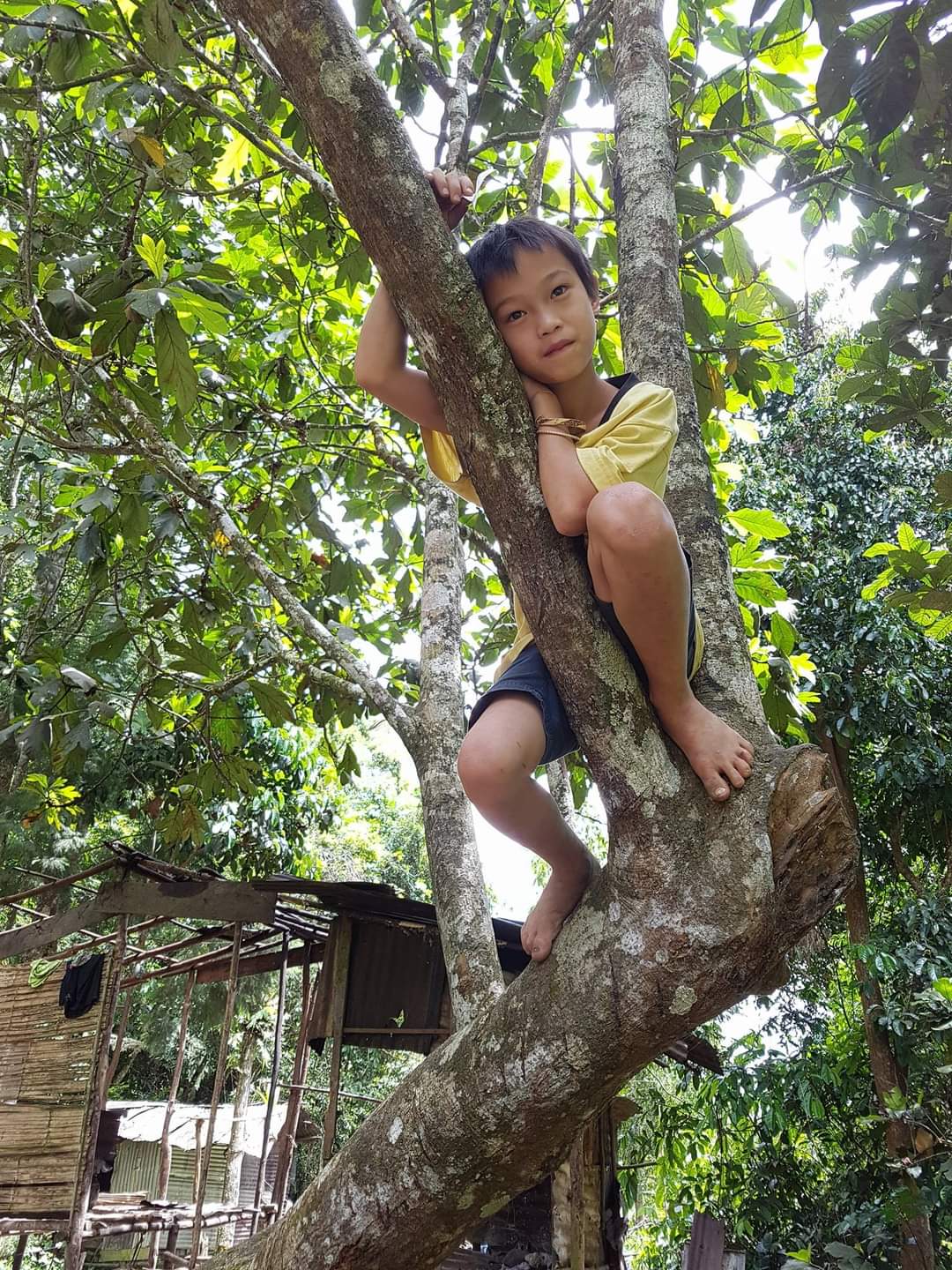
A young Penan boy atop tree branches as he watches his older siblings doing their homework.

The homes of the Penans are at the outskirts of Bario town and are very basic, close to rivers and near the jungle too.
The 450 km road trip from Miri to Kota Kinabalu…
Miri is the second largest town in Sarawak and is appx 50 km west of the border of Brunei.
It is a town built on the oil revenues and a buzzling commercial hub for Sarwakians and Bruneians.
We stayed a night in Miri after leaving Bario.
Early the next morning after breakfast, we rented a car before making the 8 hour road journey to Kota Kinabalu via Brunei.
I was not aware that Brunei was split into 2 halves with the Sarawak town of Limbang right in the center though I have been in Brunei several times buy for work (where I flew direct from Singapore to Bandar Seri Begawan, the capital of Brunei) or for National Service (in the Temburong jungles where we flew to Bandar Seri Begawan and then take a ferry ride to Bangar which is the entrance to the Temburong Jungle).
As we were crossing international boundaries, both Kah Meng and I had our Singaporean passports chopped a total of 8 times each when we crossed from Miri to Brunei, Brunei to Limbang, Limbang to Brunei and Brunei to Northern Sarawak before crossing into Sabah.
The road trip hugged the coast and also passed several smaller towns before arriving to the largest city of Sabah, i.e. Kota Kinabalu.
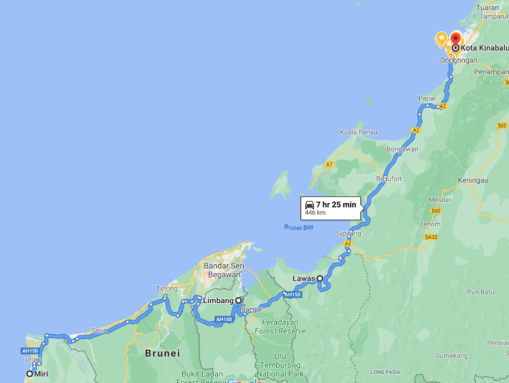
Kota Kinabalu has much to offer with the tallest mountain in Malaysia, Mt Kinabalu, to its north, island hop at the beautiful Tengku Abdul Rahman Marine Park to its east, or visit the Orangutan sanctuary at Lok Kawi Wildlife Park.
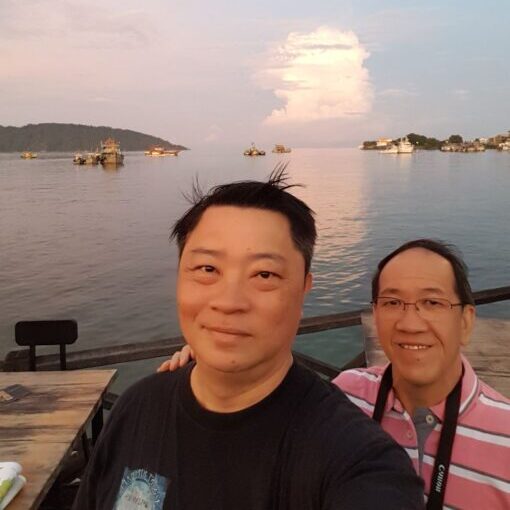
Early morning at the KK Waterfront
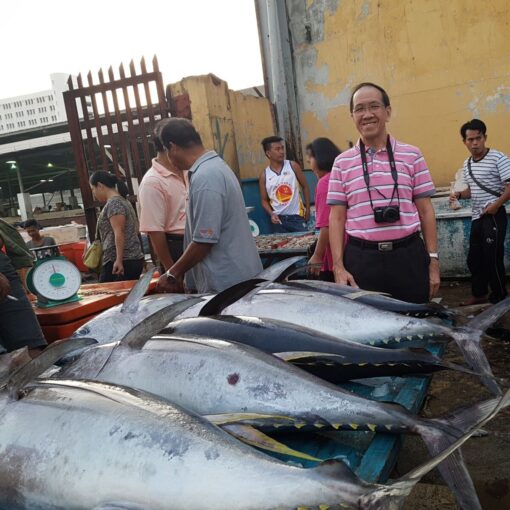
Kah Meng deciding which Tuna to buy home

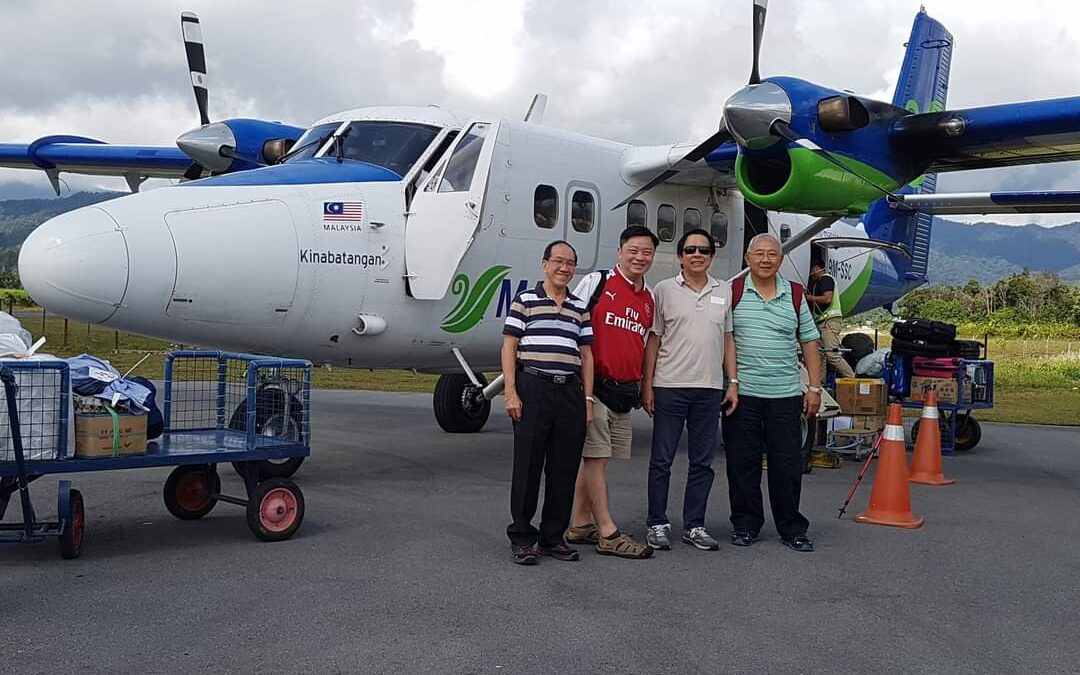
Recent Comments